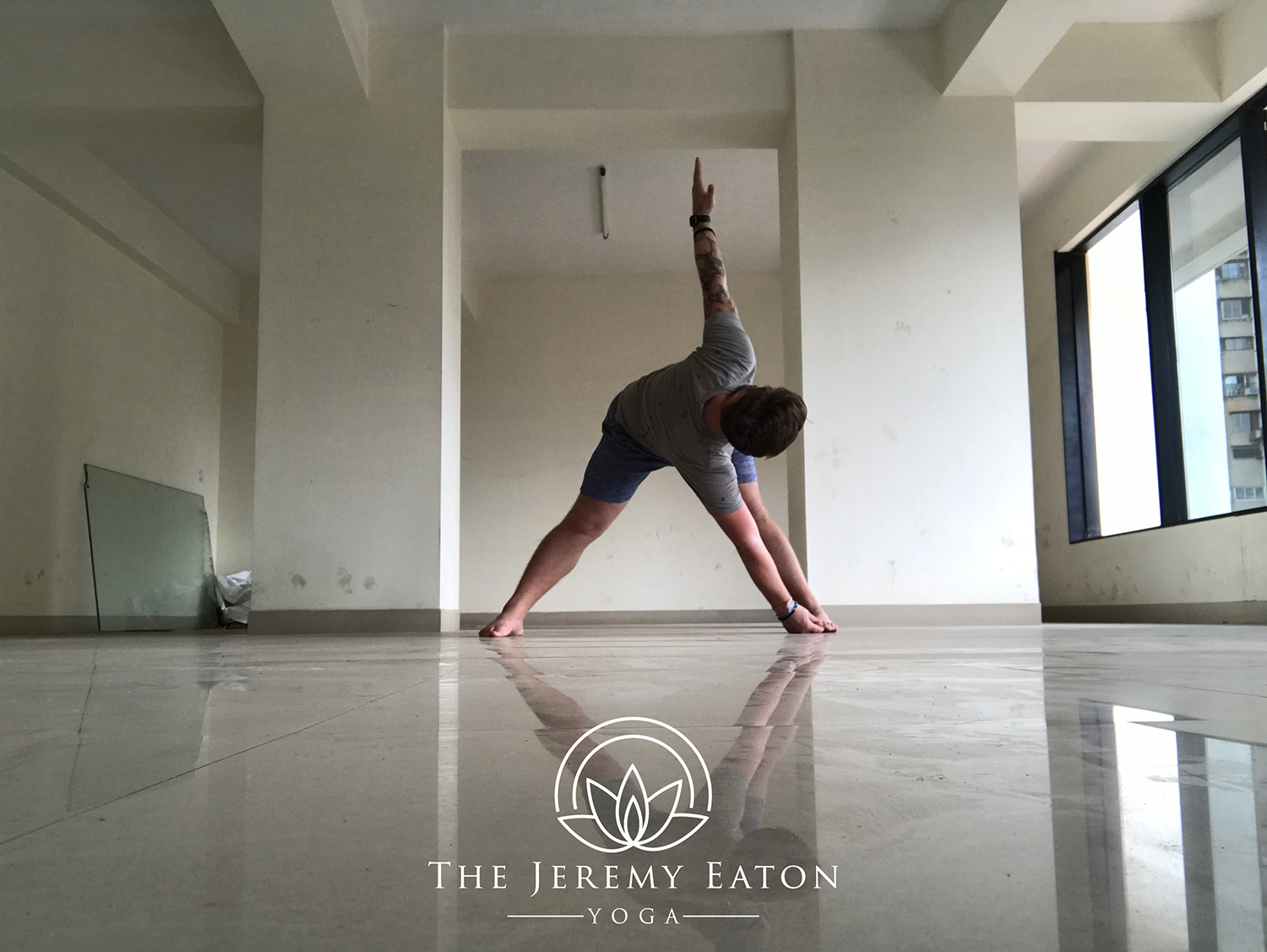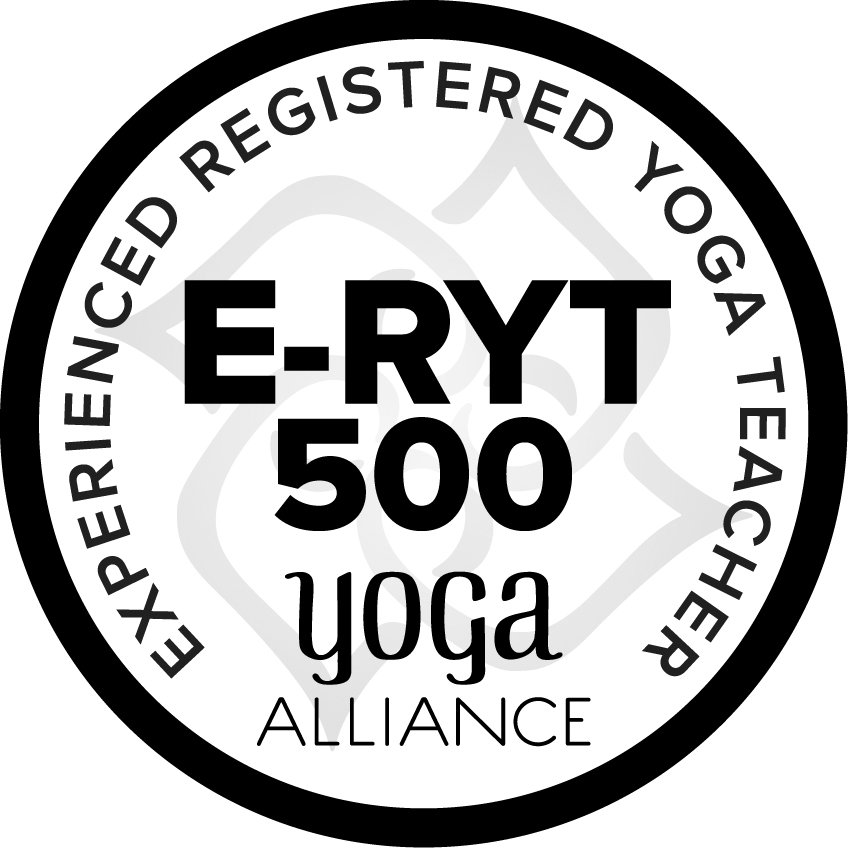I am a 1100 Hours Certified Yoga Therapist, having completed my training at The Yoga Institute in Mumbai. This esteemed institution has played a significant role in shaping my journey as a yoga professional. With a comprehensive curriculum with experienced instructors, the program instilled in me a deep understanding of the therapeutic aspects of yoga. From studying anatomy and physiology to exploring various therapeutic modalities, the training equipped me with the knowledge and skills necessary to guide individuals towards holistic well-being. Through this rigorous program, I developed the expertise to customize yoga practices based on the unique needs and limitations of each individual, ensuring a safe and effective approach to healing eventually leading me to teach for The Yoga Institute - Powai.
To learn more about my story of freeing myself from the shackles of anti-depressants and mental health, please read more here.
Demonstrating an exercise for partner yoga at The Yoga Institute, Andheri.
Areas of expertise include:
Asanas
Pranayamas
Meditation
Nutrition
General Fitness
Teen Development
Pre- Natal Yoga for Fathers/New Parents
Acceptance
Grief
Diabetes Management
Back and Joint Disorders
Physical Rehabilitation
Mental Health Management
Jeremy Eaton teaching the Bessie-Ellison Elementary School (K-6) before MAP testing.
Teaching Kailas Business Park employees simple asana and pranayama to help them through the workday.
Emceeing the 1-year Anniversary Celebration for The Yoga Institute Powai.
What is Asana?
It’s not exercise.
Asana (Sanskrit: आसन) is a fundamental aspect of yoga, encompassing a wide range of body postures and positions. Originally rooted in the practice of sitting meditation, it has evolved to include various forms of exercise within hatha yoga and modern yoga. Asana now encompasses not only seated poses, but also reclining, standing, inverted, twisting, and balancing postures, constituting the physical practice of yoga. These poses can be further categorized into meditative, cultural, relaxation, and institutional asanas, each serving a distinct purpose within the practice.
Understanding the Difference Between Asana Practice and Physical ExerciseThe difference between asana practice and physical exercise lies in their underlying intentions, approaches, and broader impacts on the practitioner's well-being.
Asana Practice:
Asana practice, a fundamental aspect of yoga, involves the performance of physical postures or poses. However, its primary focus extends beyond mere physical fitness. The intention of asana practice is to create a harmonious union between the body, mind, and spirit. It incorporates elements of mindfulness, breathing techniques, and a philosophical outlook that emphasizes self-awareness, acceptance, and inner peace. Asana practice is deeply rooted in the ancient tradition of yoga and is intended to promote holistic well-being.
Physical Exercise:
On the other hand, physical exercise primarily concentrates on enhancing and maintaining physical fitness and overall health. It encompasses a wide range of activities, such as cardiovascular exercises, strength training, and flexibility routines, with the primary goal of improving physical strength, endurance, flexibility, and body composition. While physical exercise certainly offers mental and emotional benefits, its primary emphasis is on the body's physiological development and performance.
Key Distinctions:
1. Mind-Body Connection: Asana practice emphasizes the interconnectedness of the body, mind, and spirit, promoting a deeper awareness of the self and fostering emotional and mental well-being. Physical exercise, while beneficial for mental health, primarily concentrates on physical conditioning.
2. Holistic Approach: Asana practice incorporates elements of mindfulness, meditation, and spirituality, aiming to create balance and harmony within the individual. Physical exercise, while contributing to overall well-being, tends to focus more narrowly on physical health and fitness goals.
3. Philosophical Foundations: Asana practice is grounded in the philosophical tenets of yoga, encompassing ethical guidelines, meditation practices, and a holistic worldview. Physical exercise, while guided by scientific principles, lacks the spiritual and philosophical dimensions inherent in asana practice.
In essence, while both asana practice and physical exercise contribute to a person's well-being, the former extends beyond physical fitness to encompass mental, spiritual, and emotional dimensions, offering a comprehensive approach to self-care and personal development.
The biggest difference between yoga and other forms of exercise is that yoga is not competitive; it doesn't promote violence against the body and instead, fosters an environment of peace, harmony, and acceptance. It encourages individuals to focus on their personal growth, inner peace, and overall well-being without the pressure of competing against others or pushing their bodies to extreme limits.
ASANA AS DEFINED BY THE YOGA SUTRA
An asana is that which is (held) steady and is comfortable.
‘Sthira sukham āsanam’ II. 46
‘Prayatna śaithilyam ananda samāpatibhyām’ II. 47
The efforts of long practice create infinite absorption. (The mind becomes unshakable.)
The, dualities no longer afflict.
‘Tatah dvandva anābhighātah.’ II. 48
What is Sound Therapy?
Experience the transformative power of sound healing as you surrender yourself to the soothing vibrations emitted by a harmonious ensemble of authentic Tibetan Sound Bowls created by Dr Ravesh Vade with Wellness Vibe, Crystal Chakra Bowls, Chakra Cleansing Bars, a mesmerizing 24" Gong, and an array of other meticulously curated cleansing tools. This immersive sonic journey invites you to unwind, release tension, and discover a profound sense of tranquility deep within your being. Allow the gentle resonance to envelop you, as each resonant note dances effortlessly through the air, dissolving any lingering stress and inviting a harmonic equilibrium into your mind, body, and soul. Through these sacred sounds, find solace and serenity, as you navigate your path towards inner peace and holistic well-being.
What is Meditation?
In today's fast-paced and interconnected world, it becomes increasingly challenging to find moments of peace and tranquility. Amidst the constant buzz of external noise, we often lose touch with our inner selves, weighed down by the burden of unnecessary energies. But fear not! Discover the transformative power of meditation, a sacred practice that allows you to tune out the chaos of the outside world and embark on an extraordinary journey of self-cleansing.
Meditation serves as a sanctuary where you can create a sacred space for yourself, away from the demands and distractions of modern existence. As you dive deep into this ancient art, you will unlock the ability to disconnect from the opinions and energies of others. It is within this silent and meditative state that true freedom and clarity can be found.
Through a dedicated meditation practice, you will embark on a profound inner journey, shedding the layers of negativity and stress that accumulate within your mind and body. With each mindful breath, you release unneeded energy, creating space for rejuvenation and self-reflection. The art of meditation allows you to detoxify your mind, letting go of worries, doubts, and insecurities, and fostering a state of pure serenity.
CERTIFICATIONS / AWARDS
Jeremy was named #1 for the 40 Under Forty in Missouri Biz Magazine in 2019 for Fitness/Health & Wellness.
























